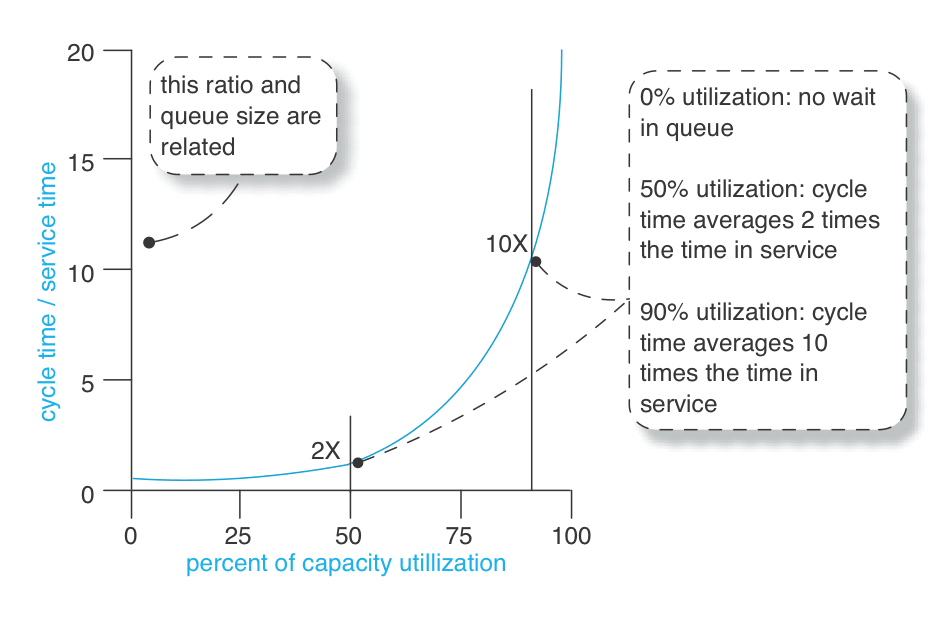Related to Slack. Related to Lean Manufacturing, aka JIT Manufacturing.
TL;DR A successful task-based system should sometimes be idle, like 40% of worker ants.
Doing tasks quickly is essential for producing value in many systems. For software teams, delivering a feature gives valuable insight into user needs, which can improve future feature quality. For supply chains, faster delivery releases capital for reinvestment. However, the relationship between capacity utilized and service time is exponential, as shown by the diagram below.

A heuristic we can derive from queuing theory is that the optimal balance between efficiency and capacity typically occurs when the system is around 30-40% idle. For a single producer system, being X% idle is that producer being idle X% of the time. For a multi-producer system, being X% idle is X% of those producers being idle on average. This heuristic applies best to systems involving lots of discrete, oddly-shaped tasks.
The linked post explains this theory in more detail, and gives examples of where queues appear in the real world. See also the Wikipedia article:
Queueing theory is the mathematical study of waiting lines, or queues.[1] A queueing model is constructed so that queue lengths and waiting time can be predicted.[1] Queueing theory is generally considered a branch of operations research because the results are often used when making business decisions about the resources needed to provide a service.